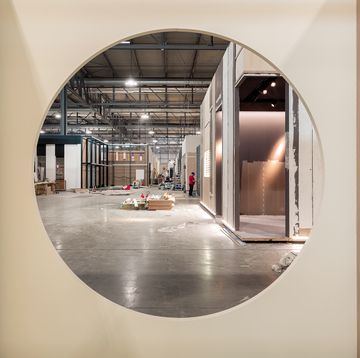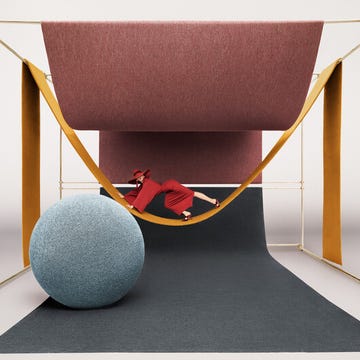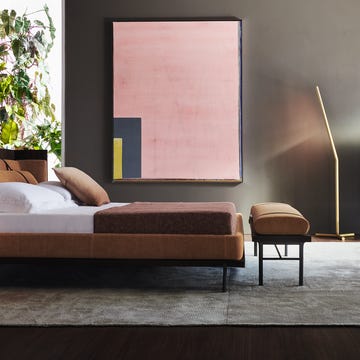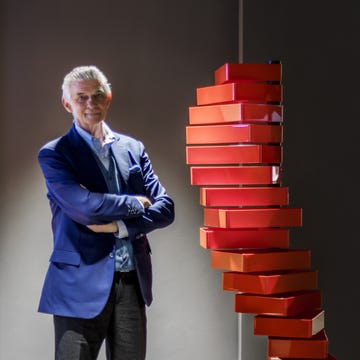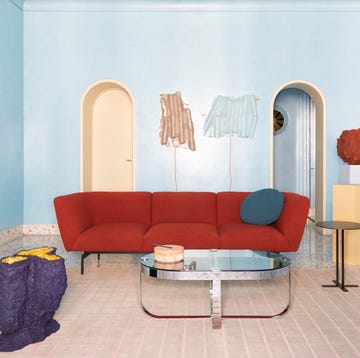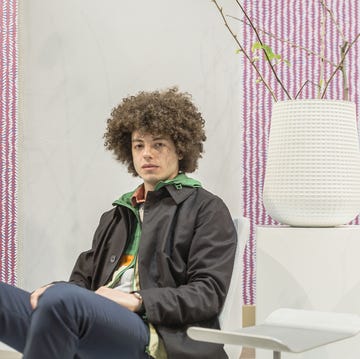The frenetic FuoriSalone 2018 calendar reveals a true tidbit: the "Spiritual House" seminar lead by Lidewij Edelkoort, that will be given at the Anteo movie theatre in Brera, on Thursday the 19th.
Let me start by saying admittance is by ticket only. It could easily sound pretty strange and contradictory given the usual free entrance nature of Fuorisalone, which was created to offer a myriad of events, ideas and previews without any price or cost.
But there is a “but” when the value of the contents and thought – and of in depth-analysis comes into play.
Inside the super exciting and quick moving backdrop of the Milano Design Week 2018, this seminar intends offering five hours of a profound study and professional update, trying to capture not only our attention, but also our time. This is a topic that indeed coincides with Li Edelkoort’s invitation and philosophy to slow down and think, in this way too hectic contemporary era always in a rush and distracted, which devours ideas and products at the speed of light.
Let’s get going. The event is promoted and organized by Liganova, a German company for brand communication, which with this seminar introduces itself for the very first time at the Milano Design Week.
On stage Lidewij Edelkoort. For those who still doesn’t know her, she is Dutch, and one of most influential and forward-thinking women in fashion and design; Founder and President of the trend forecasting Paris-based company Trend Union as well as Dean of the legendary Parsons School of Design in New York, one of the most prestigious schools in the world.
Infallible knack, aplomb from another era, elegant in her way of speaking and gestures, Li Edelkoort, together with her team, interpret our society and modern (and future) times in visions and thoughts not limited to the radius of fashion and design, but with ever increasing concentric circles embrace sociology and anthropology.
She explains: “I think that trend forecasting has changed in my life. In the beginning you would be able to keep up with the times in a few words and one or two ideas, and it would be quite simple and universal, everybody would be there into this mood, like for instance minimalism in the early 90s, the whole world was in this minimalist movement. Nowadays it’s much more complex, it's much more layered. Things going on at the same time and therefore macro trends are very important, because they are the umbrella for many different aspects. I would say that my work has become more close to anthropology, to try to understand how people will want to live. In a way it has become much more profound and less superficial. And although we show textiles, and colours and objects in design, part of the message is the way people want to live, behaviour patterns, how do we cook, how do we live, how do we sleep, how do we entertain. So, it has become a very complex method, but very interesting.
Trend is a very a bad word nowadays, because it has been abused, and people say trending about everything. It does exist however and it’s my profession and I know it’s very long current of changes in society where people slowly appear in a new lifestyle and then after, in fifty-year then they will going somewhere. There is a real notion of constant change and evolution, sometimes they do revolution. My profession is to see this early and to give my clients time to work on it. We will see a huge spiritual influence for very simple monochrome garments, quite simple, inspired by several from forms of worship”.
At the movie theatre Anteo on April 19th, from 10am to 3pm, she is going to share her latest research and analyses, presenting her famous current lectures, “Spiritual House”, focusing on the home and design, and “Enlightenment” regarding fashion and textiles.
Two round-ups that from their titles delineate quite well the common thread of her thinking and exhortation: to slow down in all senses, from the rush to produce things to frenetic shopping at any cost in favor of conscious consumption, spirituality, simplicity and togetherness.
“The seminar is going to have a very strong spiritual core. And trend forecasting is going in this direction of spirituality. What happens is that people are incredibly confused by the chaos in the political world and fear things that are going on, terrorism for instance. Activism is becoming very important. Therefore I think that the home becomes more and more central, the place where you can feel safe and free; also because of our interest in activities going on in the house the house becomes at the center. And nowadays people work from home much more easily, as we do both today, so this is a very new area in which the home is becoming a very important place. Home doesn’t exclude being a nomad. Home is where you decide it is; it can be also a small room you rent from Airbnb, a hotel room, even your spaces in the plane. When I say home it’s a very large idea, including making home wherever you are. You make A home wherever you are, taking also some objects; sometimes people take their animals and their plants and you make home wherever you are. It’s always for peace and serenity, which are very important. Spiritual house” can be religion and faith but it’s more a need for concentration, a need for resolution of things that really bother us, such as political treaties and stuff like that, things that are so equivocal that we need to fix. It’s true for young people and It’s true for old people, many people nowadays do yoga, do meditation or do some formal community, gathering, singing, reading, classes. So there is really this new idea of congregation and getting together, of sharing. It’s a very different and new period. it's something now and it will take another ten to fifty years to really become dominant, more as a movement which I see in certain city centres and certain people, but it’s definitely the way society will go,” anticipated Li Edelkoort.
In the afternoon, Li Edelkoort will be joined on stage by Tom Dixon, the British designer who wasn’t supposed to be in Milano (for the first time in 27 years of his career he is not presenting his novelties at Salone del Mobile) but, unexpectedly, he has decided to stop by the city to talk about the design industry and its future, almost in a play of juxtapositions with Li Edelkoort. Tom Dixon, in fact, is a fast-pace moving brand with super smart production and commercial ideas and products. Here Li and Tom come face to face and might give an unpredictable merging and harmony of viewpoints and attitudes.
“Li Edelkoort is our very close friend and partner, so we’re super happy that she liked our idea of bringing her to Milan Design Week for a special issue of her trend seminars. We’re offering limited tickets available for all those who want to be part of and value this special opportunity. Li and Tom are both true icons in their respective disciplines. By bringing them together on stage within an intimate, almost private setting and atmosphere at Anteo, it’s going to be an exciting and interesting discussion about the challenges of the design industry which will range from fast consumption to slow shopping – both now and in the future,” says Indra Rahn, Director Corporate Communication at Liganova.
And Tom Dixon from London concludes: “I have a lot of admiration for Li Edlekoort and her visionary way of decoding the world. As I am on holiday this year in Milan rather than working, it will be nice to sit on stage and chat with your friends about the future”.
Save the date: Anteo on April 19th with Li Edelkoort, Tom Dixon and Liganova.
Opening picture: Lidewij Edelkoort, founder e president of Trend Union and dean at the Parsons School of Design.


